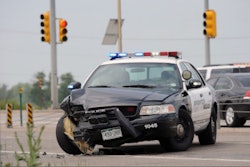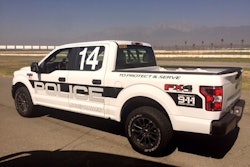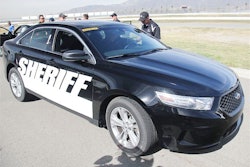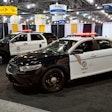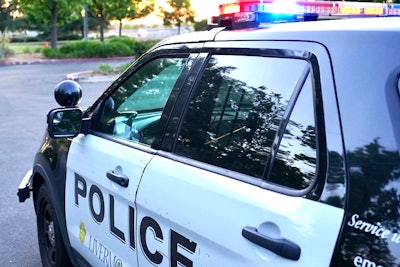 Even with increased fuel costs the Livermore Police Department, like other departments, must still keep patrol units on the road to serve its community in northern California.Photo: Livermore Police Department
Even with increased fuel costs the Livermore Police Department, like other departments, must still keep patrol units on the road to serve its community in northern California.Photo: Livermore Police Department
While consumers can simply drive less as gas prices rise, police departments cannot. In California, some smaller departments are facing the inflated fuel costs the best they can.
The Livermore Police Department, in the Tri-Valley area outside San Franscisco, is comprised of 91 sworn officers and amid the higher fuel cost is still keeping 45 patrol cars, all Ford Explorers, on the road. Five officers are on patrol each shift, with the department working four shifts per day.
The cost per gallon for the 87-octane fuel used by the department has increased steadily in 2022 from $3.02 on Jan. 18 to $4.30 on March 17. Azenith Smith, public information officer for the department, said Livermore Police are focused on the department’s mission to serve the community and will simply adapt.
“I talked with our fleet manager and essentially, we are like everyone else. We have to manage the increased cost of fuel, and we just do it. We have no other choice, and we are dealing with it the best we can,” she said. “We have community needs we must meet.”
She said the department’s mission statement is about a commitment to community safety, so they need officers out there on the street on patrol despite any fuel challenges.
“If we do exceed what we are allotted, then it’s up to the city leaders to figure out how to get that money. Unless they tell us differently, we have our priority, and our priority is community safety and we need to utilize those patrol cars and have them out on the street,” she says.
She explains a third-party contractor provides fuel for all city-owned vehicles. “We’re looking at vendors who are more cost efficient, but again we are limited with the type of vendors we can use.”
Prior to the rising cost of fuel, the Livermore PD ordered two new hybrid patrol vehicles, but they have yet to accept delivery. Smith says they are expected to arrive before June. However, the department is already equipped with two unmarked hybrid vehicles, but Smith points out how those vehicles are used differently than the marked cars that are continually on patrol. The department also has four officers on motorcycle, with plans to add two more motorcycles to the fleet.
“Our city leaders have been encouraging us to look at more hybrid and electric cars. We still need to test drive them. Once we do, we can figure out if we need to purchase more,” she adds, while pointing out there are additional challenges for the department when it comes to electric vehicles. There are no charging stations at the police department. Also, the patrol cars are used throughout the day and there is no downtime that would allow for them to be recharged.
About 60 miles east of Livermore, Chief Jerry Ramar is in his first year leading the Oakdale Police Department. Despite the rising fuel costs, he is under budget on fuel expense. “Right now, we are at 60%, and we are 75% through the year on my budget for fuel and oil, so I don’t foresee it being an issue,” Ramar says.
Ramar, who has now been with the department for three years, served as acting chief beginning in July 2021, and has been chief since October 2021, says he cannot speak to the city’s fuel expenses for the department over past years. However, he says, “We are budgeted well in the event that something like this happens.”
The City of Oakdale buys fuel in bulk and all city vehicles are fueled by the same tank at the public services department.
“We are probably paying a wholesale rate and I am not sure what that rate is,” Ramar says.
Oakdale is a small city with about 23,000 population and only six-square miles under the police department’s watch. The department is allotted 12 vehicles, but not all are always on the road. Ramar says, as with any fleet, some are periodically off the road for service.
Four vehicles hit the roads per patrol shift, which consists of a sergeant and three officers. Ramar points out during days with the addition of a school resource officers and a few others, as many as eight vehicles could be on the road.
The department has three motorcycles, but only one is gas powered.
‘We do have two Zero motorcycles; those are the electric motorcycles. Our motor officers use those quite a bit so that gives us a little savings,” the chief says.
He said the department keeps a mix because the electric motorcycles have a limited range. Ramar points to having to respond out of the city to assist other departments or to travel for a funeral and how the Harley-Davidson works better in those situations.
“We’re only six square miles so those Zeros are perfect for doing enforcement within the city,” Ramar says. “The officers really like the Zeros. They’re easy to handle, they’re comfortable – especially in the summertime because you don’t get the heat that you get from the combustion engines.”
Going forward, Ramar says he cannot predict what the future holds as far as fuel prices.
“Like everybody else in law enforcement, we will just adapt accordingly,” he says. “If the gas prices continue the way they are, for next year we will either have to figure out a way to cut back or get more funding on that line-item budget.”
Another Northern California police department about an hour west of Oakdale has taken strides over the past decade to add alternative-fuel vehicles to its fleet.
About 20 miles southwest of Livermore, the Fremont Police Department uses two all-electric vehicles in their patrol fleet. According to the department’s website, Fremont Police transitioned part of its fleet from gas-powered vehicles to hybrid vehicles. In 2009, the department began using Toyota Prius and Ford Fusion hybrid vehicles. In 2019, Fremont Police deployed its first fully electric-powered vehicle, a Tesla Model S 85, as part of its patrol fleet. In 2021, FPD deployed its second fully electric-powered patrol vehicle, a Tesla Model Y.
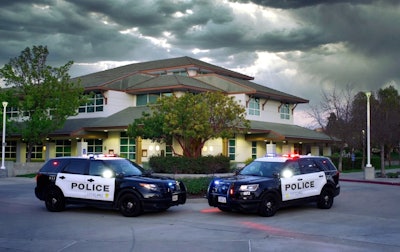 Livermore Police use Ford Explorers for patrol and have two hybrid Explorers on order that will be added to the marked patrol fleet. The department already has two unmarked hybrid units.Photo: Livermore Police Department
Livermore Police use Ford Explorers for patrol and have two hybrid Explorers on order that will be added to the marked patrol fleet. The department already has two unmarked hybrid units.Photo: Livermore Police Department







